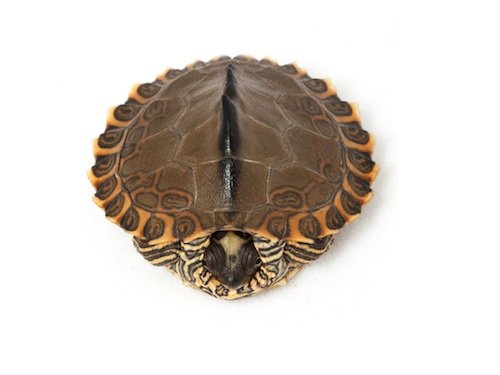Introduction to the Pearl River Map Turtle
The Pearl River Map Turtle (Graptemys pearlensis) is a fascinating species of freshwater turtle, notable for its striking physical features and ecological significance. Classified within the family Emydidae, this turtle is primarily distributed along the Pearl River and its tributaries, spanning parts of Mississippi and Louisiana. The scientific classification places it in the order Testudines, characterized by its distinct shell morphology and unique decorative patterns.
Physically, the Pearl River Map Turtle is distinguished by its flattened, elongated carapace decorated with intricate yellowish or cream-colored lines that mimic the contours of a map, hence its name. Adult turtles can reach a carapace length of up to 9 inches, with females typically larger than males. The species exhibits sexual dimorphism, observable not only in size but also in the shape of their heads. Female turtles possess a broader head and larger body size, while males tend to have more elongated heads, adapted for their ecological role.
This turtle species inhabits a variety of aquatic environments, preferring slow-moving rivers, swamps, and seasonal floodplains. The Pearl River, which serves as the primary habitat, features a combination of sandy and muddy substrates that facilitate nesting and basking behaviors. Environmental conditions such as water temperature, flow levels, and vegetation drastically influence their habitat choice. Furthermore, the Pearl River Map Turtl e plays a crucial role as an indicator species within these ecosystems, providing insights into the health of riverine habitats. Its presence reflects the ecological balance, highlighting the importance of conservation efforts aimed at preserving both the species and its natural environment.
Conservation and Protection of the Pearl River Map Turtle
The Pearl River Ma p Turtle (Graptemys pearlensis) is experiencing significant threats that necessitate urgent conservation efforts. Habitat destruction due to river alteration, urbanization, and industrial development poses a severe risk to its survival. These activities disrupt their natural habitats, leading to diminished nesting sites and reduced availability of food sources, which are crucial for their development and survival.
Pollution is another critical challenge impacting the Pearl River Map Turtle. Agricultural runoff, plastic waste, and industrial effluents contaminate river water, affecting not only the turtles but also the entire aquatic ecosystem. These pollutants can lead to health issues in turtles and diminish the quality of their habitats, further stressing already vulnerable populations.
Illegal trade poses an additional threat. The Pearl River Map Turtle’s unique appearance has made it a target for collectors and the exotic pet market. This illegal activity depletes their populations and disrupts local ecosystems where these turtles play a vital role. To combat these threats, several wildlife organizations and government agencies have implemented ongoing conservation programs aimed at protecting the Pearl River Map Turtle and its habitat.
Efforts such as habitat restoration, pollution control, and species protection legislation are crucial to its conservation. For example, initiatives aimed at reducing pollution in the Pearl River through better waste management practices have shown promising outcomes. Moreover, education and awareness programs play a pivotal role in informing the public about the importance of the Pearl River Map Turtle and their critical status.
Individuals can also contribute to conservation efforts by advocating for policy changes, supporting local conservation groups, and participating in clean-up activities along riverbanks. By raising awareness about the plight of the Pearl River Map Turtle and promoting sustainable practices, everyone can play a part in preserving this unique and vital species for future generations.





